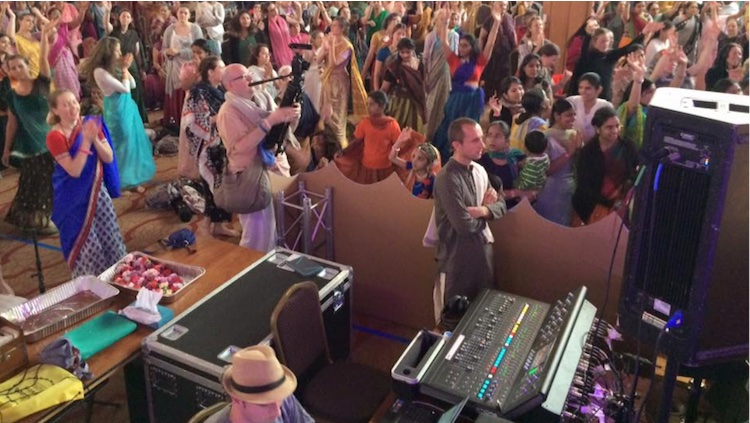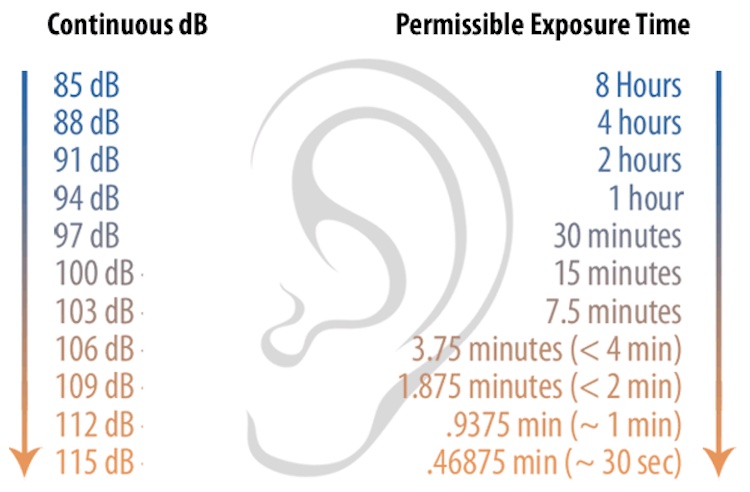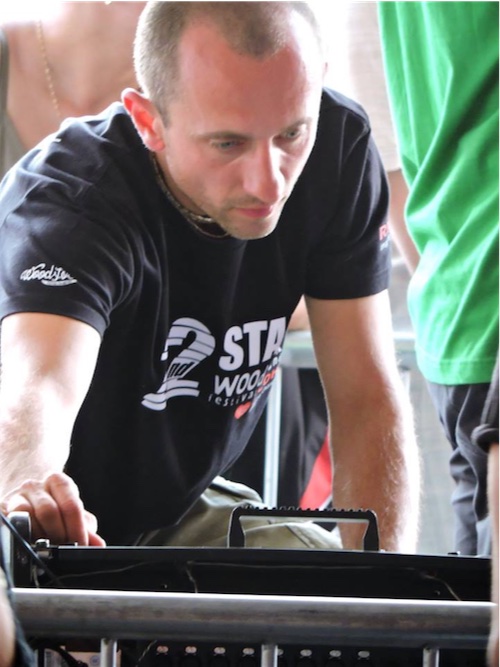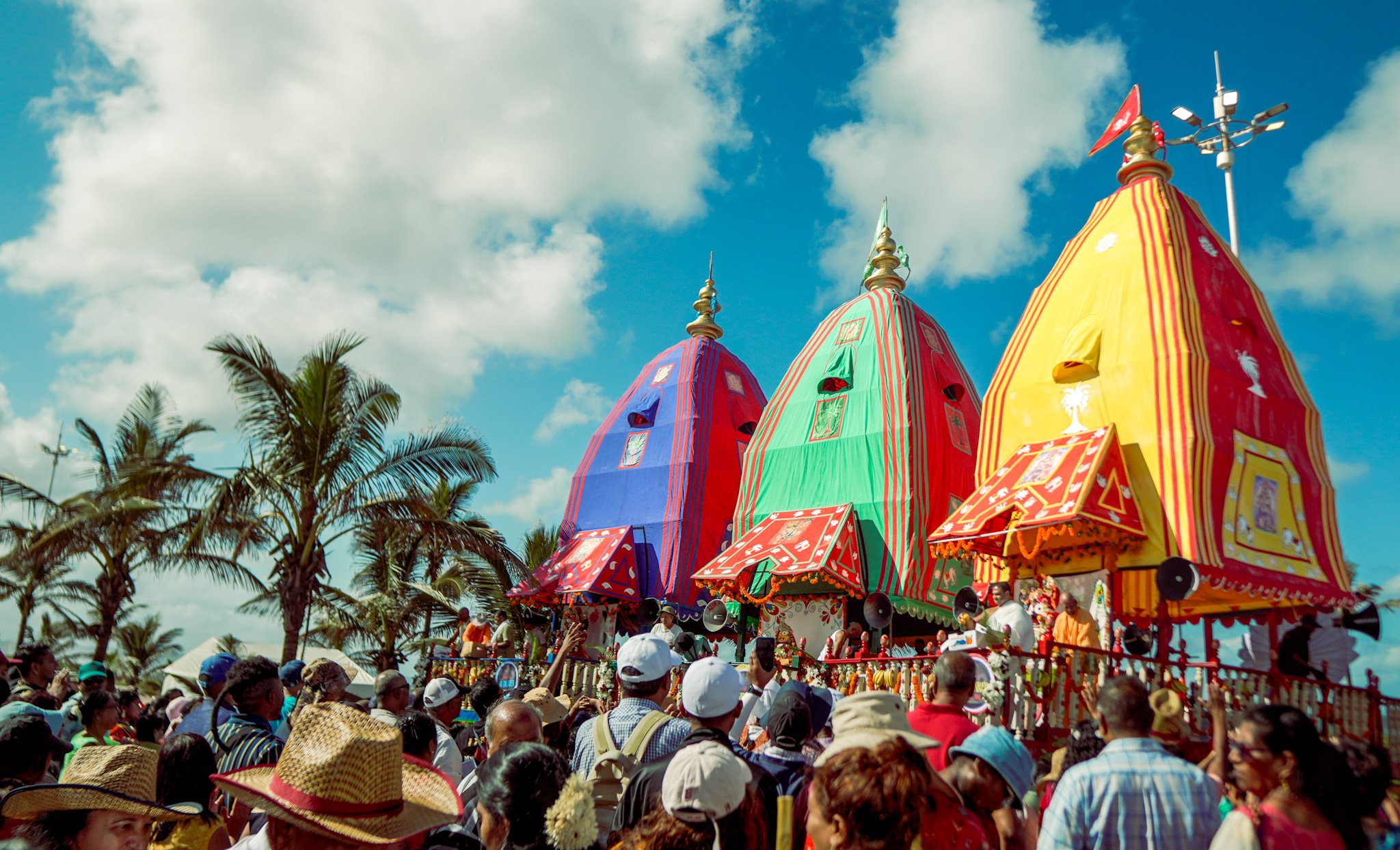Kirtan Sound Engineers Raise Awareness About Harmful Sound Levels
By Madhava Smullen | Aug 25, 2018

Sacinandana Swami once joked: “The scriptures predict that as Kali Yuga progresses, devotees will play musical instruments so loud that people will not be able to hear the maha-mantra anymore.”
That might make you crack a smile, but the background isn’t so funny. ISKCON devotees, and in particular kirtan leaders, suffer from a high level of hearing loss. Some parents are afraid to bring their babies into the temple room.
Arjuna Das, an electrician who lives with his wife and two-year-old son on the New Varshana farm in New Zealand, is one of those concerned about the issue. Arjuna does sound for his temple’s kirtan events. His father has been an acoustical engineer for over thirty years.
“Safe noise exposure is calculated by the permissible exposure time of a certain decibel per 24-hour period,” he explains. “For example, the safe exposure time for 85 db is 8 hours. But an increase in just 3 db halves the amount of safe exposure time. So the time for 88 db is 4 hours, etc. Most loud kirtans in temples are safe for 30 minutes to an hour at their peak – or even less.”
Arjuna’s father, Ross Palmer of Palmer Acoustics, is working on a device for temples that can read average decibel levels and flash a warning light if noise reaches a dangerous level. Relatively inexpensive digital sound level meters are also available online.

Safe noise exposure levels
But most important is ISKCON-wide education and a change in kirtan practices. Arjuna feels that Dvija Vara Das, the sound engineer for Indradyumna Swami’s Polish festival tour and the Sadhu Sanga Retreat, has the answers.
“In a balanced kirtan, you should hear the chanting in the foreground, with the instruments creating the background,” Dvija says. “ISKCON kirtans, however, are commonly quite the opposite. The result is that after some time we become tired and the kirtan becomes unpleasant to listen to. Also psychologically, if the music gets too loud and we can’t hear our own voice, we lose interest in participating and just listen instead of singing along.”
The first step is to reduce the number of instruments. In many kirtans, devotees spontaneously pick up instruments no matter how many are already in session. But Dvija Vara advises that just one pair of kartals and one mridanga (no whompers or gongs) are usually enough even in a large kirtan.
Kartals are the biggest offender, quickly causing hearing fatigue with their upper midrange frequencies. So, when doing the sound for kirtan festivals, Dvija sits the kartal player behind the lead singer and mridanga player to reduce kartal leak into the mics. He also prefers that backing singers do not play kartals.
“Believe it or not, even without amplification you can hear the kartals very well in the mix, but at the same time there is so much space for other instruments and of course the maha mantra is in the foreground,” he says.
The next step is to ensure that musicians are skillful not only in playing their instrument, but in playing it in a way that contributes to a pleasing and balanced kirtan.

Dvija Vara Das does sound on the Polish tour
“I think many devotees growing up in our culture of ‘loud kirtans’ don’t have a practical experience that kirtan can be very dynamic yet pleasant, and instruments can be played tactfully and softly,” says Dvija Vara.
He adds: “Often mridanga or kartal players are so focused on playing that they are not aware of the volume they create. And when the kirtan gets faster, they play as loud as possible, as if it’s a competition to see who can play the loudest.”
The third step is to engage professional and experienced sound engineers, or to provide education in managing sound. An experienced engineer can make all the difference. For instance, when a kirtan starts to get more dynamic and devotees tend to play louder, Dvija Vara reduces the sound level of instrument microphones rather than increasing the level of vocal mics.
Investing in high quality sound systems, and installing acoustic panels in temple rooms can also help. The result of all these techniques makes immersing oneself in the Holy Name a much easier and more pleasurable experience, as Arjuna Das found when attending the Sacred Sound kirtan festival at New Govardhana in Australia, which had Dvija Vara managing the sound.
“Having the ideal volume levels not only meant no hearing damage, but it meant no one needed ear plugs, and it made it wonderful for singing along because I could actually hear myself sing,” he says.
Unfortunately, at present some temple managers are insensitive to the dangers of hearing loss and have refused the advice of experienced sound engineer devotees.
However Arjuna and Dvija Vara continue to create awareness, and request others to raise awareness of the problem too.
“Of course, at the end of the day, when the maha-mantra is present, each kirtan – loud or not – is special,” Dvija Vara concedes.
* * *
Ross Palmer of Palmer Acoustics recommends the following affordable meter for temples to monitor kirtan sound levels:












